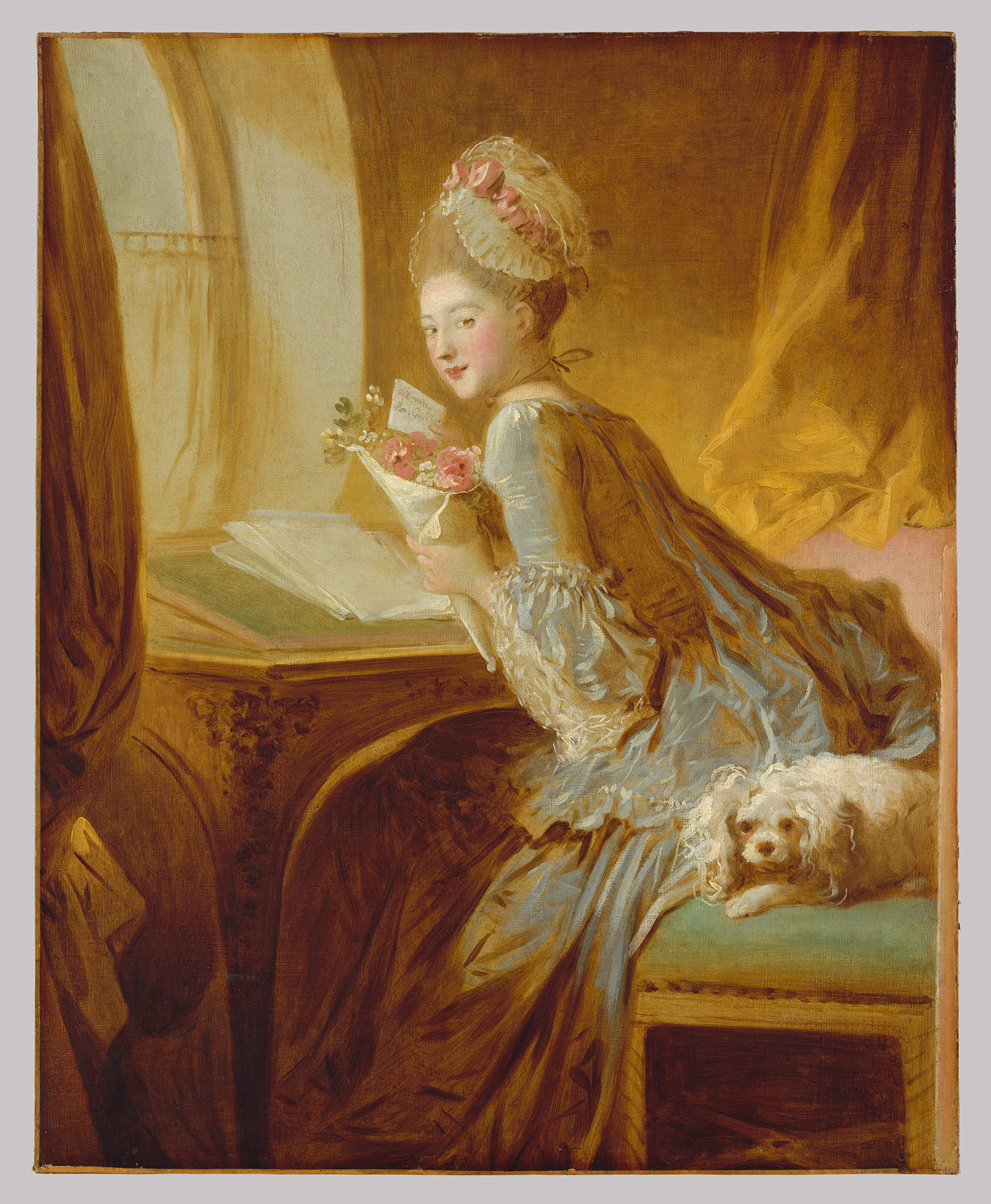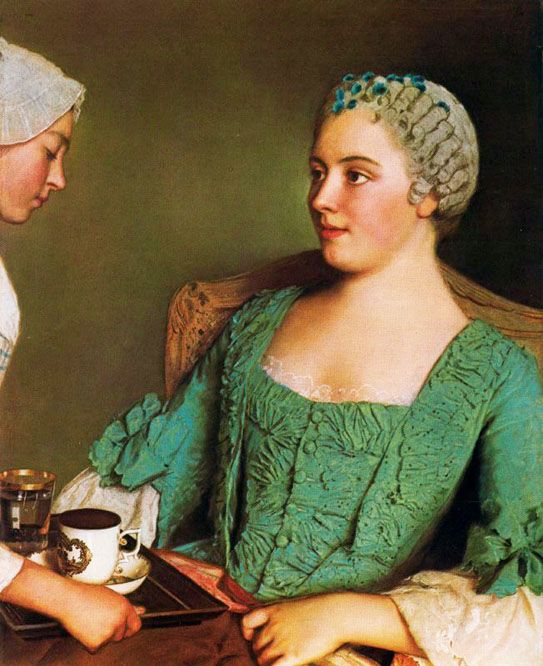Meet the completed pet
en l'air. This has been a week of traumas, obsessive sewing and happy
painting.
As usual the simple
task list hid hours of work.
 Task one – sleeves.
Made up sleeve-1 as per pattern – did not fit to the robings as
shown on the Arnold drawing and stuck straight out like a penguin.. They would do for fitted sleeves but
needed greater length between the bottom of the arm hole and the head
plus more width at the head because of the lengthening of the front
bodice. There was sleeve-2, and sleeve-3. I wasn't sure about the fullness
at the top of the arm but many portraits show a looseness there, so it
will stay. The arm is set back and angles backward rather than
hanging straight ( better than the first Pingu attempts). I have been
assured that this is right but it still looks strange to me –truly need a real Gwendoline to see how this works.
Task one – sleeves.
Made up sleeve-1 as per pattern – did not fit to the robings as
shown on the Arnold drawing and stuck straight out like a penguin.. They would do for fitted sleeves but
needed greater length between the bottom of the arm hole and the head
plus more width at the head because of the lengthening of the front
bodice. There was sleeve-2, and sleeve-3. I wasn't sure about the fullness
at the top of the arm but many portraits show a looseness there, so it
will stay. The arm is set back and angles backward rather than
hanging straight ( better than the first Pingu attempts). I have been
assured that this is right but it still looks strange to me –truly need a real Gwendoline to see how this works.
After sleeve trauma
came flounce-gate. Having been out and bought contrast fabric for
lining the flounce and then made them and attached them, I decided
the bulk of fabric in the fine gathers at the cuff looked clumsy and
awkward. Hmm. Then salvation through the post – Fashion History
arrived showing details of the Kyoto Institute collection – lots of
raw pinked edges! Did get a little carried away, well a lot carried
away. It took several days of looking and pondering before giving in
(time for the perforated finger ends to heal- sewing the flounces on
had been a pig of a job) Off came the flounces, unpicked and pinked
and reattached with the lining now dropped slightly and facing outward.

and then just had to try doing curling flourishes at the hem. I still think of these as moustachios.
It has changed the
nature of the garment – it was quite plain and clean with a clarity
about the construction, but now is fluffy and fussy. I still
quite like it, but that was Thursday gone as well!
Final finishing – the
hem and redoing the sleeve flounces and that was Saturday. DONE.
 |
| Fragonard - the Love Letter. Met Museum |

This has been a great
adventure – painful at times but rewarding. The research has
gobbled up hours – trawling for 18thC painters has introduced many
new names to explore and reintroduce old favourite pieces. I was
expecting rigid, theatrical, formalised portraits with grandiose
dresses, silks, flying ribbons and romantic notions of settings and did find lots of them.
Considering the highly mannered style of the Rococo some of the
portraits are definitely modern in their boldness and direct use of
colour and composition. I still have trouble dating some paintings - the dates of the sitter are given but not that of the artwork, a real menace especially when artists used their own collection of garments over many years to pose their models in. Jacquet !
I've also been reading “Queen of Fashion – what Marie
Antoinette wore to the Revolution” by Caroline Weber. Very
different attitudes to the significance of dress. The rigid
stratification of society up held by distinctions in dress code, I
had known about this but not the extreme importance it seems to be
given in the breakdown of the ancien regime. Were the experiments in
new dress modes responsible for, or merely a symptom of new ideas? Was
it the new that caused the conflict or the determined adherence to
the old?
And of course I've been
illustrating – an interior, seated pose to reflect the pet's
informal nature.
Lacking anyone daft enough to pose for me I have had to borrow bits of myself to help – so no elegant young romantic writing love letters – just me with a drawing board or table. I love artistic license – bye to the wrinkly bits – a very cheap face lift! Promise she does look happier in close ups. It is a love doing the fabric. Does any else want paintings of cloth? Some court portraitists hired specialists to paint in the clothes - does an opening still exist do you think?

Lacking anyone daft enough to pose for me I have had to borrow bits of myself to help – so no elegant young romantic writing love letters – just me with a drawing board or table. I love artistic license – bye to the wrinkly bits – a very cheap face lift! Promise she does look happier in close ups. It is a love doing the fabric. Does any else want paintings of cloth? Some court portraitists hired specialists to paint in the clothes - does an opening still exist do you think?


















